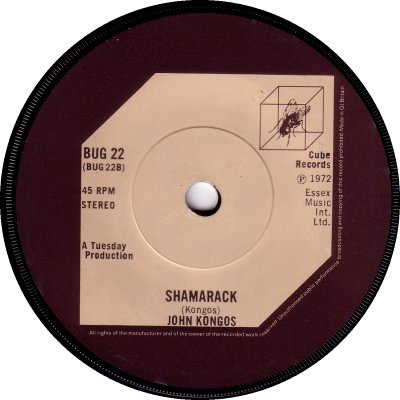
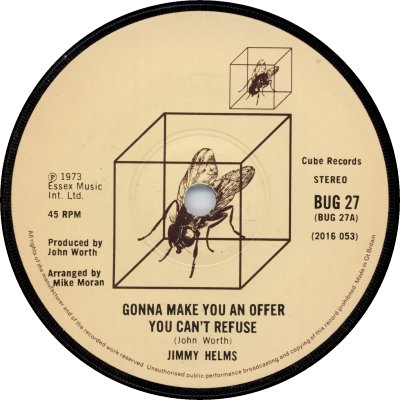

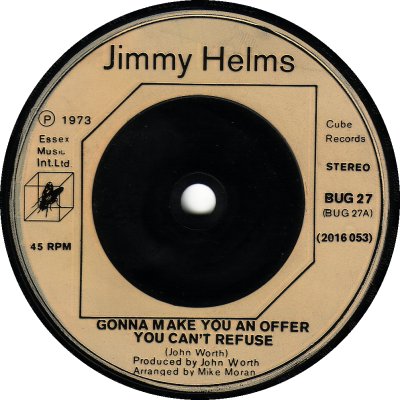
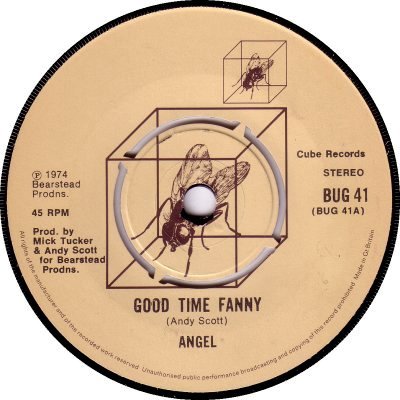
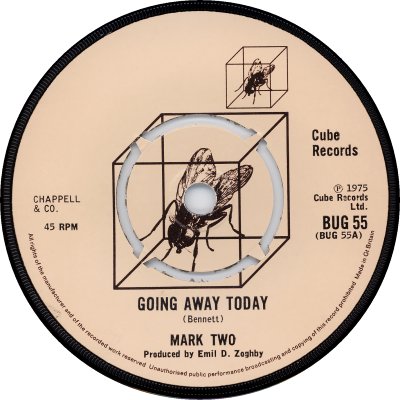
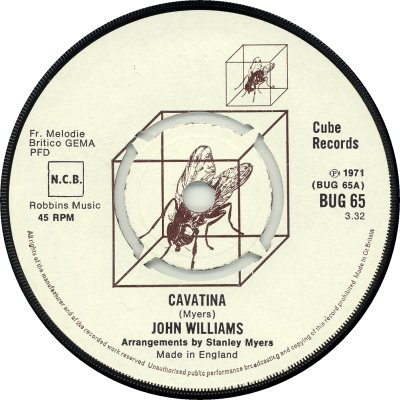
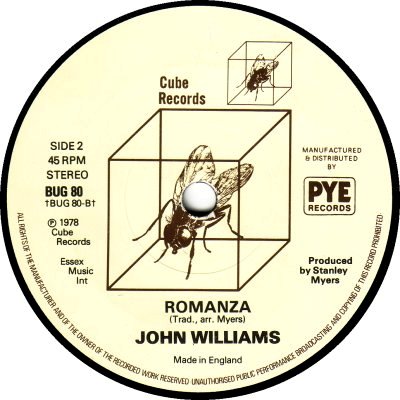
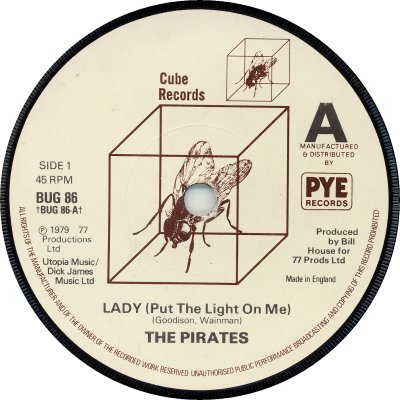
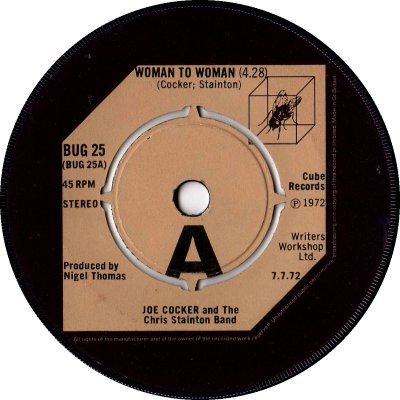
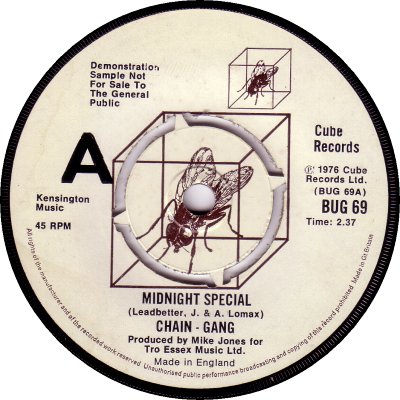
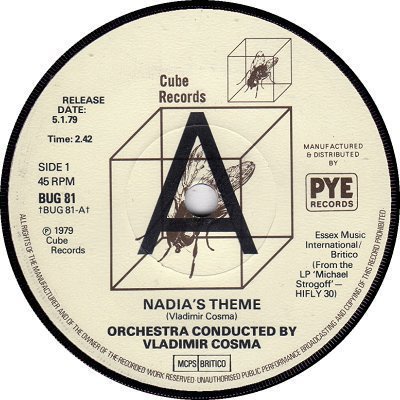
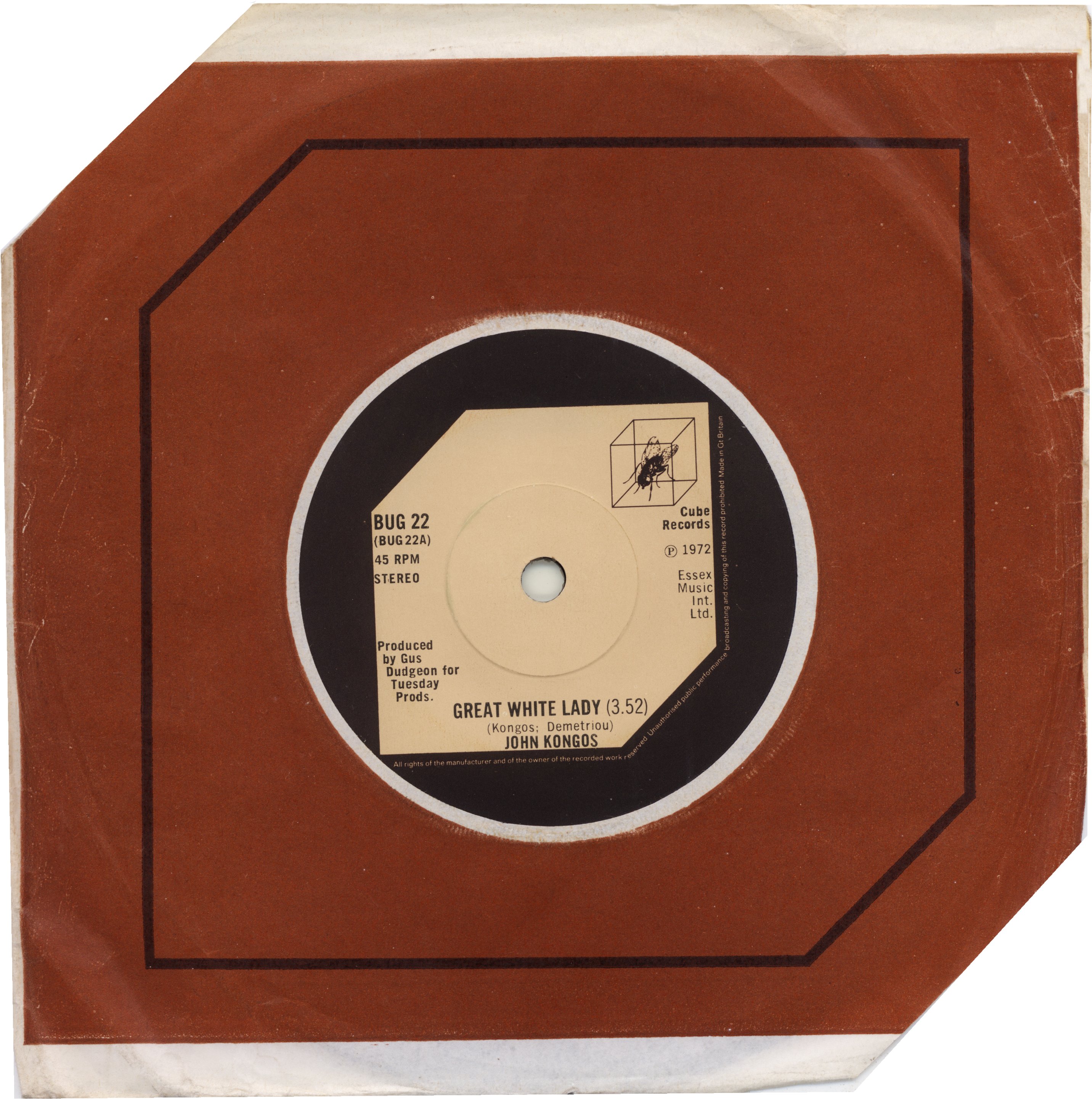
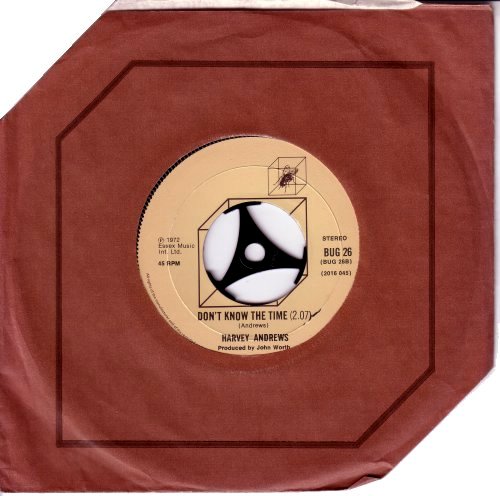
Cube was Essex Music's successor to their Fly label (q.v.), which was started by David Platz in 1970. 'Record Retailer' of the 12th of February 1972 revealed that Essex planned to phase out the Fly label and replace it with a new one, Cube; also, when the current agreement with EMI ended, in September, the new label would move to Polydor. 'Music Week' (the renamed Record Retailer) of the 20th of May 1972 reported that the first Cube records would be released the following week; the catalogue series would be unaffected by the change. Thus it was that after eighteen singles on Fly (BUG-1 to BUG-18) the nineteenth, BUG-19, appeared on Cube. The new label's logo, featuring a fly inside a cube, made the connection between the two concerns obvious (1). Promos from this period had a small 'A' under the spindle, and also had the release date on them (10). On a couple of singles the titles were put at the top, presumably for reasons of space. The move to Polydor duly took place, at the end of August; it was a distribution deal rather than a licensing one, and according to 'MW' (5th August) was the first of that kind that Polydor had undertaken. At the time of the move the label design changed, with the brown surround disappearing and a large fly in a cube appearing instead (2). Manufacture was switched to Phonodisc, Polydor's and Philips's joint pressing and distribution venture. That company's habit of dinking many of its singles at source played merry hell with the new design (3), a problem which continued when injection-moulded labels, with their large blank centres, became standard (4). 'MW' of the 30th of September carried an article which stated that Cube would be concentrating on a small roster of seven acts but hoped to sign a middle-of-the-road Pop band and a straight Rock 'n' Roll band in the future.
The agreement with Polydor saw Cube score its first singles' chart success with Jimmy Helms's 'Gonna Make You An Offer You Can't Refuse' (BUG-27; 2/73), but in the event the deal lasted for a little over a year. Cube turned to Island for pressing and distribution from October 1st, 1973, and as a result EMI took over manufacture of its singles again; presumably it also shared the distribution chores, as it did for Island's own records at the time. This meant the return of paper labels, ones with narrow dinking perforations if there were any (5). There don't appear to have been any dedicated promo labels during the Polydor period, and only the last Island-era single, 'Tina' by Stallion (BUG-53; 1/75), can be found with EMI-style demo markings. All wasn't well at Cube, however, and the company's failure to break new acts led to a shake-up in June 1974, with Olav Wyper becoming the new managing director ('MW', 8th June) - Wyper had previously been responsible for the Philips's 'Vertigo' and RCA's 'Neon' labels. Early in 1975 Cube moved on from Island and signed a licensing deal with Decca, which led to its records being pressed by that firm and distributed by associated company Selecta. 'MW' of the 14th December 1974 said that the move was to take place at the start of January, but, as EMI pressings continued to appear during that month, some time in February seems more likely - 'MW' of the 1st of March said that the deal had been signed 'recently'. The move resulted in more minor changes in the layout, as well as the appearance of wider dinking perforations than had previously been seen. The label name was given slightly more prominence than previously, too (6), and promo labels were reintroduced (11). The labels turned pale (7) with BUG-62. Success still proved elusive, and in May Olav Wyper resigned.
The next development came in March 1976, when David Platz and label manager Jeremy Thorpe announced the launch of a new label, The Electric Record Company (q.v.). In an article from 'MW' of the 13th of March a spokesman for the company was reported as saying that Cube had lost its label identity, and that its strongest material was now in its back catalogue. The Electric Record Company would be given a definite identity - it was intended for artists who were 'Contemporary, original and different' ('MW', 11th March 1978). The Electric registered hit singles with Gordon Giltrap and Quantum Jump, but success continued to elude the Cube label itself. January 1978 saw another switch: at the end of its agreement with Decca, Cube signed a two-year licensing deal with Pye; the deal covered The Electric as well as the main Cube label. The company name on the label shifted position at the time of the move, and an appropriate credit to Pye appeared (8); a small 'A' appeared on the appropriate side of issues from May 1979, starting with BUG-82 (9). Promos were marked in the usual Pye manner, with a big black central 'A' (12). A couple of months later came an announcement that Cube was to be reserved for back-catalogue material and 'MOR material in its American sense' ('MW', 11th March 1978). One of those MOR releases, a reissue of 'Cavatina' by John Williams, saw Cube back in the Charts at last, when it got to No. 13 in 1979. Cube was to continue in that MOR / back-catalogue way into the mid 1980s, by which point it was primarily associated with TV / Film / Theatre music from the Bucks Music company. Cube / Fly was revived in the mid-90s, and again in 2002.
With regard to company sleeves, the EMI-era ones had white rims (12) which disappeared when the label moved to Polydor (13). During the Decca / Selecta period plain white covers seem to have been the norm, but when the company sleeve was used the cut-off corners were replaced by ordinary square ones. Thanks to Bob Mayhead for the first promo scan, and to Ade Macrow of the 45cat site for the third.




